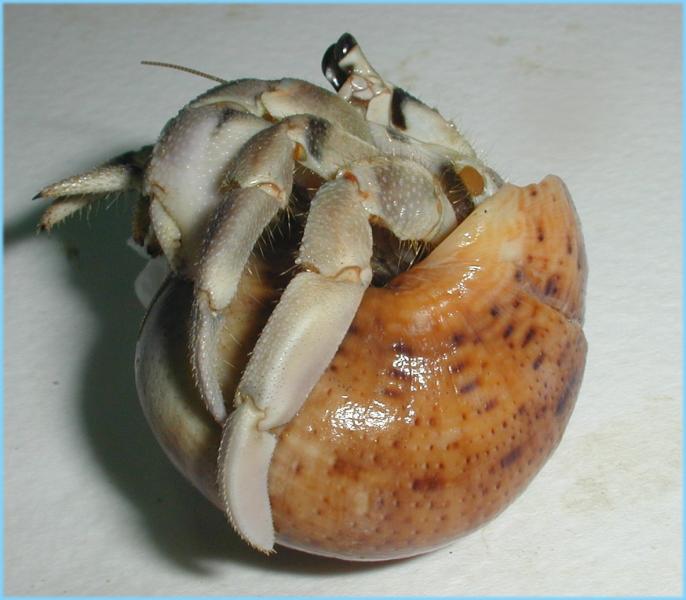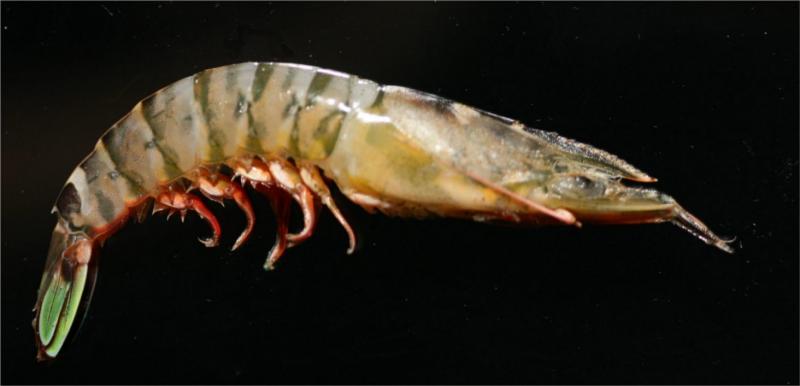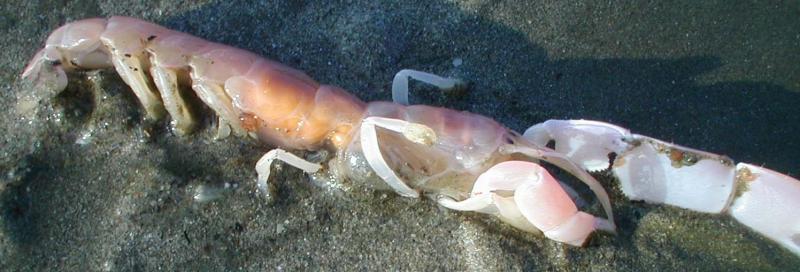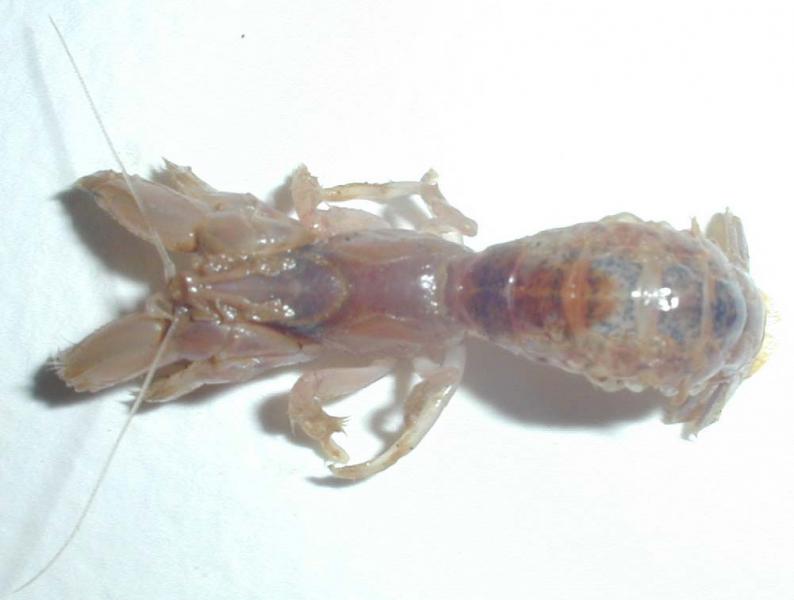Decapods have five pairs (10) legs known as pereiopods. These are divided into seven segments, coxa, basis, ischium, merus, carpus, propodus and dactylus. The body is comprises three regions the cephalon (head) and thorax which are fused as the cephalothorax, and the abdomen (tail). Six fused body somites form the head and each of these carry an appendage, the eye, antennule, antenna (both sensory), mandible, maxillule, maxilla (all for feeding). Eight somites form the thorax with three pairs of maxillipeds (for feeding) and five pairs of pereiopods (legs) the last four are usually locomotory walking legs. The first pairs of pereipods are usually chelate and form a claw. The abdomen comprises seven segments four off which may bare pleopods and the last segment may have an elaborate tail fan with uropods and a telson.











